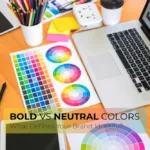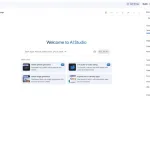Today, visuals are the secret ingredient to a winning online marketing strategy. Whether it’s eye-catching images or entertaining videos, great visuals keep users hooked while also helping with SEO. Search engines love user-friendly, good-looking content, so by optimizing your images and videos, you can give your website a visibility boost and attract more organic traffic. Let’s see how optimizing your visuals impacts SEO!
What is Visual Content in SEO
Visual content includes things like images, graphics, infographics, and videos. These elements tell stories, spark emotions, and engage people in ways plain text just can’t. When it comes to SEO, optimized visuals boost user engagement, keep visitors on your site longer, and give search engines the correct signals that your site content is valuable and relevant.
Key Techniques for Optimizing Images
- Compression and File Size: Big image files can slow your website to a crawl, frustrating users and hurting your search rankings. The fix? Compress your images to shrink the file size without losing quality. Tools like TinyPNG, ImageOptim, or other online compressors make this a breeze.
- Responsive Design: With everyone glued to their phones, your images need to look good on any screen! Make sure they’re responsive by using tricks like the srcset and sizes attributes to automatically serve the right image size for each device. Keep it smooth and adaptable!
- Image Formats: Decide the right format for your images! Use JPG or JPEG for photos, and PNG for graphics with transparent backgrounds or text. For the best of both worlds, WebP and AVIF are top-notch for compression and quality, just make sure they work with your users’ browsers.
Key Techniques for Video Optimization
- Video Hosting: While it’s possible to host videos directly on your website, using a reliable video hosting platform like YouTube or Vimeo can improve video playback performance and reduce the load on your server. These platforms also provide additional features for video optimization and analytics.
- Video Thumbnails: Create compelling video thumbnails that accurately represent the content and tempt viewers to click and watch. Optimized thumbnails can increase click-through rates and improve user engagement.
- Video Transcripts and Captions: Provide video transcripts and closed captions to improve accessibility and user experience. Search engines index the text from transcripts, potentially improving your video’s visibility in search results.
Alt Text for Image SEO
Alt text, or alternative text, is an essential component of image optimization for SEO. It gives a quick description of what’s in the picture, popping up if the image doesn’t load or helping those with visual impairments who use screen readers. Plus, search engines love it too, as it helps them grasp what your image is all about.
When writing alt text, aim for concise yet descriptive phrases that accurately represent the image’s subject matter. Incorporate relevant keywords when appropriate, but avoid keyword stuffing, which can be perceived as spam by search engines. Additionally, ensure that your alt text is unique for each image and provides meaningful context within the surrounding content.
Image File Names and Captions
Optimizing image file names and captions can further enhance your image SEO efforts. Using descriptive and keyword-rich file names for your images is like giving search engines a helpful map to find what’s inside, while captions provide additional context and can improve user engagement.
When naming image files, use clear and concise descriptions that accurately represent the image’s content. Make your file names easy to read by separating words with hyphens or underscores. For instance, “maktal-image-seo.jpg” is more descriptive than “maktal01.jpg.”
Similarly, captions should provide relevant information about the image and its context within the surrounding content. Sprinkle in relevant keywords and avoid keyword stuffing.
Video Transcriptions and Their SEO Benefits
Video transcriptions are text versions of the audio content in your videos. They not only improve accessibility for users with hearing impairments but also provide valuable text content that search engines can crawl and index. By including relevant keywords and phrases in your video transcriptions, you can potentially improve your video’s visibility in search results.
Transcriptions can be added as closed captions or subtitles within the video player or as accompanying text on the same page as the video. Some video hosting platforms, like YouTube, automatically generate transcriptions, which are reviewed later and edited for accuracy.
Optimizing Image and Video Load Speed
Slow-loading images and videos can significantly impact user experience and search engine rankings.
To optimize image and video load speed, consider the following techniques:
- Lazy Loading: Implement lazy loading techniques to load images and videos only when they become visible within the user’s viewport.
- Content Delivery Networks (CDNs): Leverage CDNs to serve your visual content from servers geographically nearer to your users, reducing latency and improving load times.
- Video Streaming: For videos, consider using adaptive bitrate streaming techniques, which adjust the video quality based on the user’s internet connection speed.
Structured Data for Visual Content
Structured data, provides additional context and metadata about your website’s content, including images and videos. By executing structured data, you can enhance the way search engines understand and display your visual content in search results.
For images, you can use the ImageObject schema type to provide information such as the image’s title, description, and dimensions. This can lead to rich snippets.
Similarly, for videos, the VideoObject schema type allows you to provide details like the video’s duration, upload date, and transcript text. This structured data can enable enhanced search results displays, such as video previews or key moments, improving visibility and user engagement.
Avoid These Mistakes
- Keyword Stuffing: Overusing keywords in image alt text, file names, or video transcriptions can be perceived as spam by search engines and negatively impact your rankings.
- Irrelevant or Misleading Content: Ensure that your visual content accurately represents the subject matter and aligns with the surrounding text. Misleading or irrelevant content can confuse users and search engines, leading to penalties.
- Ignoring Accessibility: Neglecting accessibility features like alt text, closed captions, and transcripts can exclude users with disabilities and limit your content’s reach and engagement.
- Disregarding Load Speed: Failing to optimize image and video load speeds can significantly impact user experience and search engine rankings.
To wrap up, optimizing your visual content for SEO is a must in today’s digital marketing. By using techniques like optimizing alt text, file names, captions, load speed, and structured data, you can boost your website’s visibility, keep users engaged, and attract more organic traffic.
Remember, visuals should support your content strategy, adding value and keeping your audience hooked, all while being accessible and user-friendly. Updated with the latest SEO trends to keep your visuals sharp and effective.




